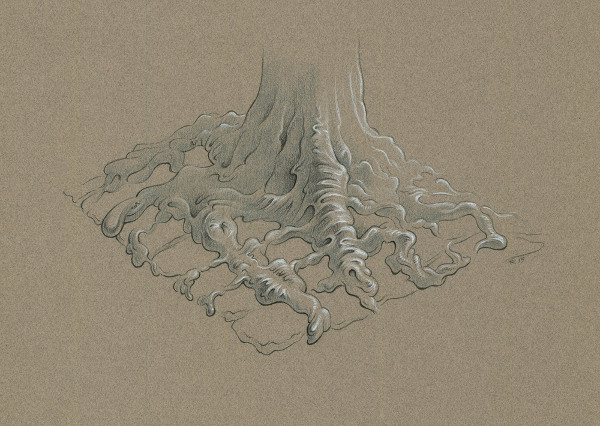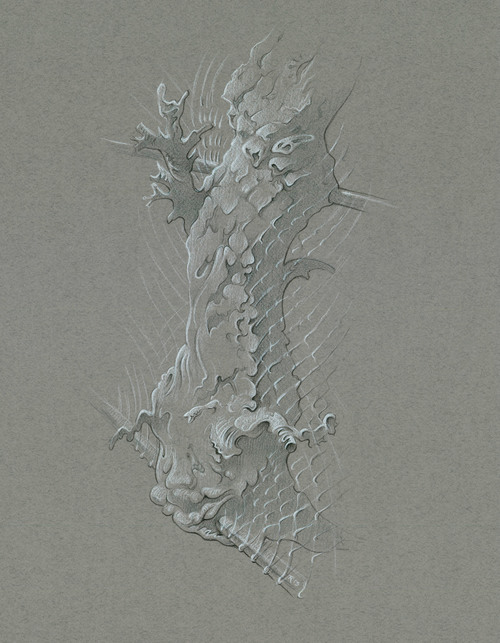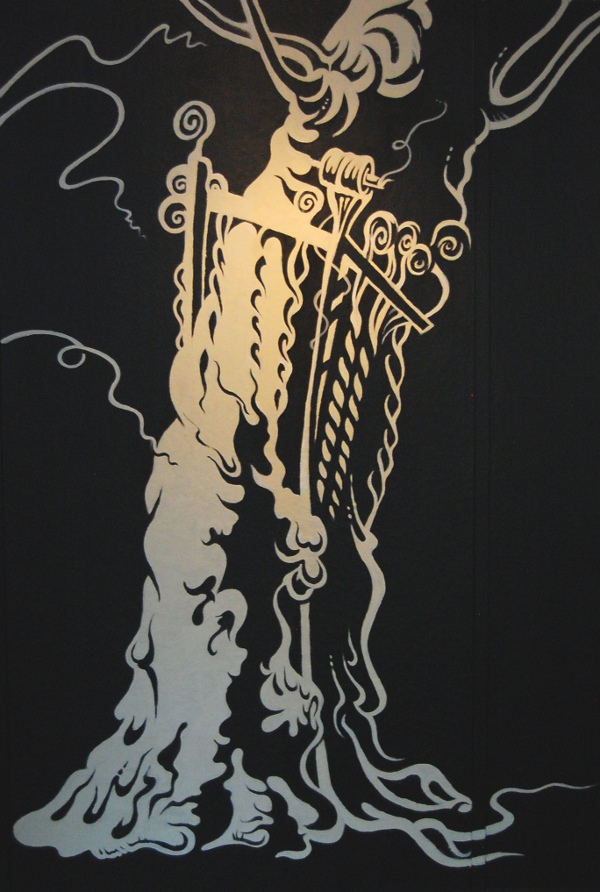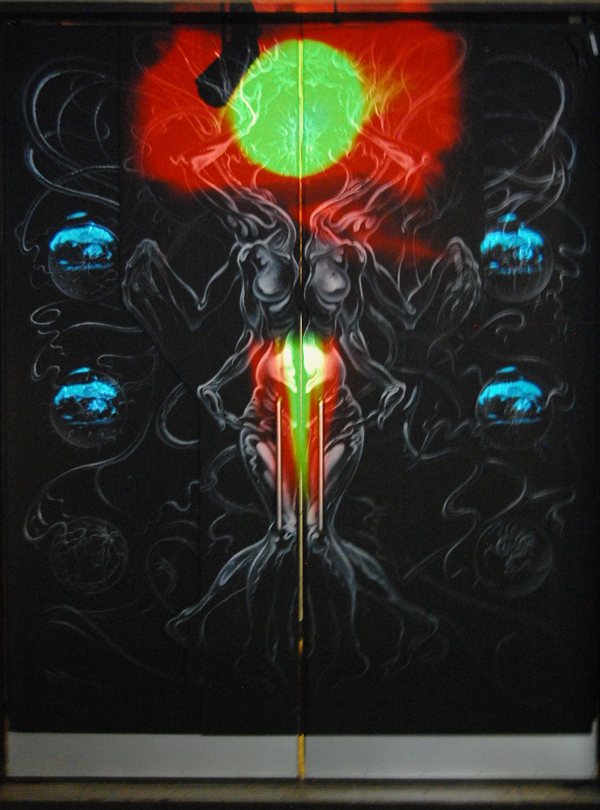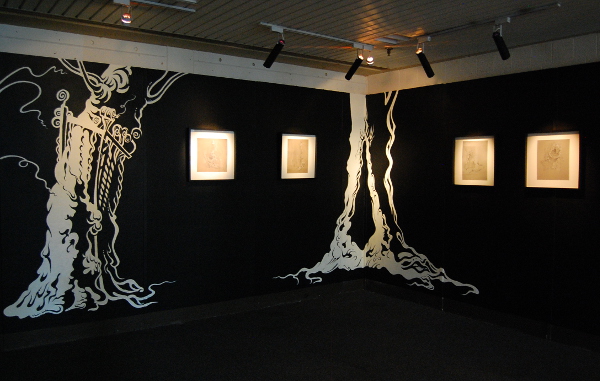
Ted Knighton beckons us into uncharted woods at International House
On a day-to-day basis we are often so jaded and hurried that we miss the beauty all around us, and even lose sight of the strangeness that is life. Thanks to Ted Knighton, we have a not-so-subtle reminder of the weird and the sublime by way of Knighton’s illustrations, installations and video work. The artist is currently showing his series “Street Trees” at International House for the rest of the season.
It is immediately apparent that Knighton’s show is not just a gallery full of drawings in frames – it is an environment in and of itself as much as the outside world that it mimics. Within the East Gallery space, the walls are colored black, and the lights are dim and very precisely placed. Even if the framed artworks on display are mostly the focus of the exhibit, the ambiance is paid equal attention. Knighton apparently wants to not only represent a surreal world, but to construct and demonstrate one.
Ted Knighton, “Street Tree 4th.” Image courtesy tedknighton.com
Each relatively small drawing is a biomorph of mark-making materials that examines both plant life and the fluid dynamics of molten metal. The works are mostly colorless, deploying grays, whites and blacks on either similar gray or taupe sheets of paper. Knighton’s acknowledgment that trees in urban areas are subject to unique environments is reinforced by a palette that seems to make the wood seem as lifeless as the concrete and rust around it. Interestingly enough, the artist mostly avoids including the synthetic settings to center on merely the twisted shapes of the trunks themselves. With the possible exception of a chain link fence buried deep inside of a presumably living tree or the silhouette of a parking meter, many of these images merely hint at their overall surroundings.
Ted Knighton, “Street Tree on Fence.” Image courtesy tedknighton.com
Placed at regular intervals throughout the room are the white, negative space patterns of similar, more reductive specters of trees. By breaking the flow of the smaller pieces, Knighton further ushers us into the darkish realm that exists in the vast blank areas that he leaves in both the drawings and on the walls – this is the segment of the show where having an overactive imagination comes quite in handy. Although these images look mightily familiar, what strange creatures might be lurking in such a barren and warped landscape? What artifacts might have been swallowed in the encroaching flood of dripping, molten wood or snagged in the even deeper root structures? Landing solidly between Theodor Geisel and H.R. Geiger, Knighton prefers to leave most of his landscapes a mystery.
One of the life size white tree forms spaced out around the room.
A pair of doors painted to look like a contorted woman/wooden hybrid provide the surest evidence for actual life in the show. While the trees in other places seem to move and ripple, they paradoxically appear hard, steely and lifeless. This personified piece of timber is in the midst of raising its wrinkled arms and buckling its knees together, casting no doubts on its vitality. On top of this painting, Knighton projects a series of video patterns in order to further the illusion of energy. Glowing balls of fire, electrical streaks, strange orbs and more endow this witch with a mystical existence beyond plant and animal, resembling both but adhering to neither.
A witch-like tree form straddles a pair of doors, bestowed with mystical powers via video projection.
Ted Knighton’s “Street Trees” is deceptive in its name because it provides exactly what it promises… but also a great deal more. With the artificial vs. natural aesthetic in mind, Knighton delivers but also elaborates on this polarity. His creation dashes expectations, teetering between the everyday and the unreal in a way that moves into uncharted woods all his own.
International House is located at 3701 Chestnut St., Philadelphia; 215-387-5125; ihousephilly.org.
Recent Content
-
Artsarticle ·
-
Artsarticle ·
-
Artsarticle ·
